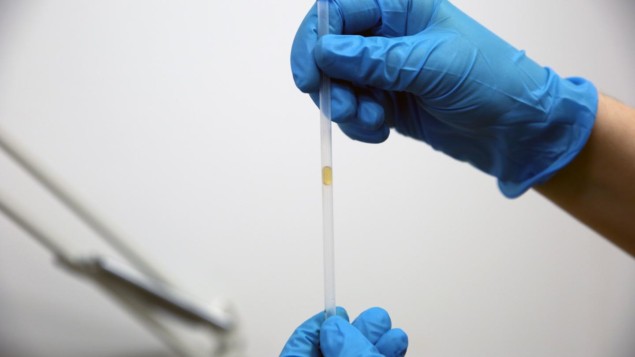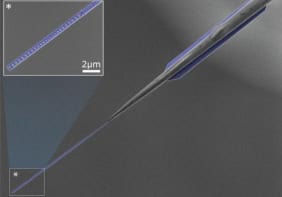
Honey and other highly viscous fluids can flow faster than water in specially coated capillary tubes. This surprising discovery was made by Maja Vuckovac and colleagues at Finland’s Aalto University who also show that the counterintuitive effect stems from suppressed internal flows within more viscous droplets. Their results directly contradict current theoretical models of how liquids flow in superhydrophobic capillaries.
The field of microfluidics is concerned with controlling the flow of liquids through tightly-confined capillary regions – often to create devices for medical applications. Low-viscosity fluids are best suited for microfluidics because they flow fast and effortlessly. More viscous fluids can be used by driving them at higher pressures, but this increases mechanical stresses in delicate capillary structures – which can lead to failure.
Alternatively, flows can be sped up using superhydrophobic coatings, which contain micro- and nanostructures that trap cushions of air. These cushions significantly reduce the contact area, and subsequently the friction, between liquids and surfaces – boosting flow by up to 65%. According to current theories, however, these flow rates are still consistently reduced as viscosity increases.
Superhydrophobic inner coatings
Vuckovac’s team put this theory to the test by observing microdroplets of different viscosities as gravity pulled them down through vertical capillary tubes with superhydrophobic inner coatings. As they travelled at constant velocities, the droplets compressed the air below them, creating pressure gradients comparable to those found in a piston.
Although the droplets displayed the expected inverse relationship between viscosity and flow velocity in open-ended tubes, the rule was entirely reversed when one or both of the ends were sealed. The effect was most pronounced for droplets of glycerol – which flowed over 10 times faster than water, despite being three orders of magnitude more viscous.

Fluids only get so runny as physicists put a universal lower limit on viscosity
To uncover the physics behind this effect, Vuckovac’s team introduced tracer particles to the droplets. Over time, the motions of the particles revealed rapid internal flows within the less viscous droplets. These flows caused the fluid to penetrate into the microscale and nanoscale structures in the coating. This reduced the thickness of the air cushion, preventing pressurized air beneath the droplet from squeezing past to level out the pressure gradient. In contrast, internal flows were barely perceptible in glycerol, suppressing its penetration into the coating. This resulted in a thicker air cushion, allowing air below the droplet to move aside more readily.
Using their observations, the team developed an updated fluid dynamics model that can better predict how droplets travel through capillary tubes with different superhydrophobic coatings. With further work, their discovery could lead to new ways of creating microfluidic devices capable of handling complex chemicals and medicines.
The research is described in Science Advances.



